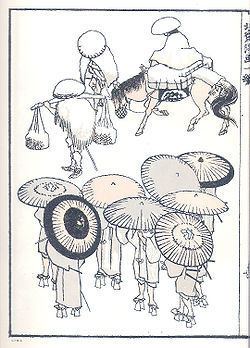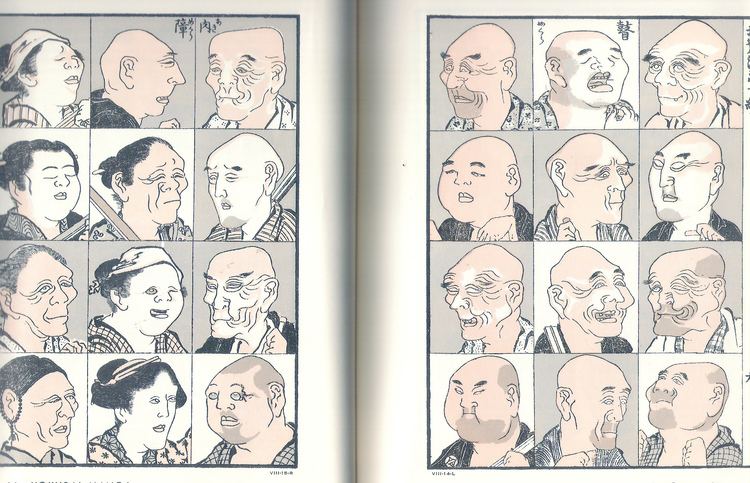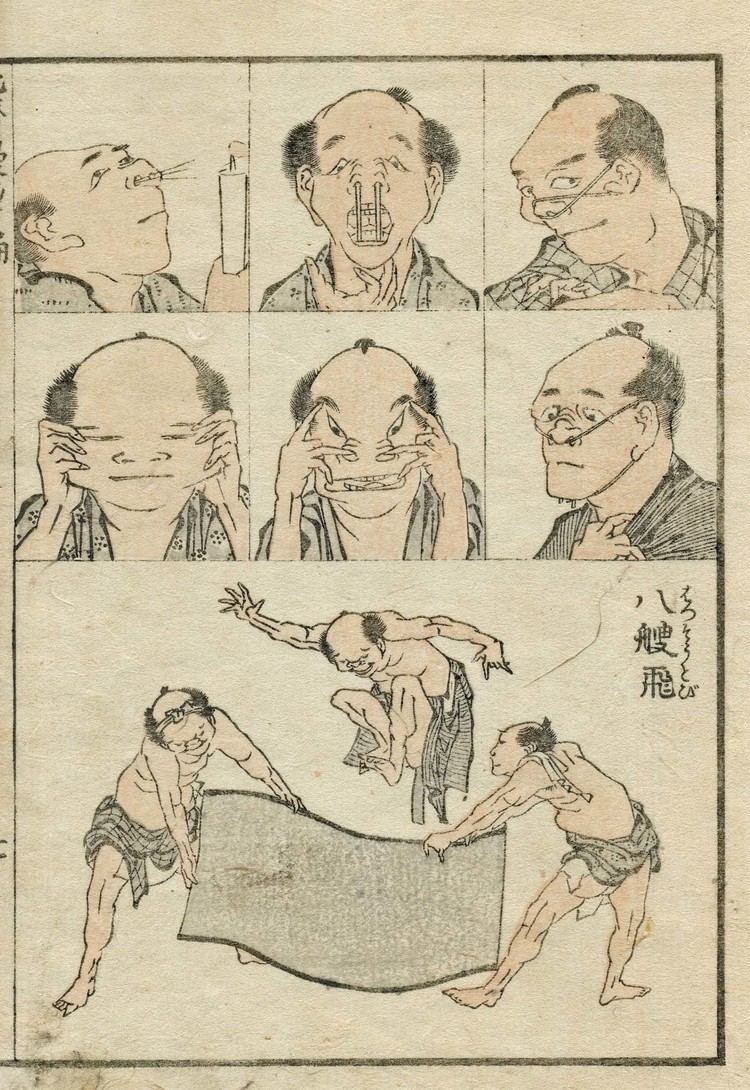Year Published 1814–1878 | Created 1814 | |
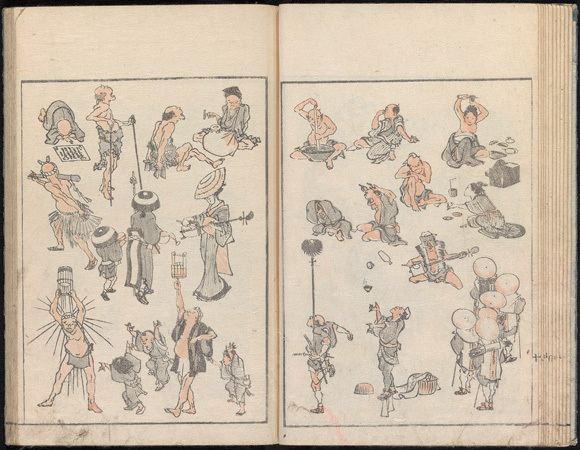 | ||
Media Woodblock printing in Japan Similar Thirty six Views of Mount Fuji, A Tour of the Waterfalls of the Provinces, The Dream of the Fisherman's Wife | ||
Hokusa hokusai manga
The Hokusai Manga (北斎漫画, "Hokusai's Sketches") is a collection of sketches of various subjects by the Japanese artist Hokusai. Subjects of the sketches include landscapes, flora and fauna, everyday life and the supernatural. The word manga in the title does not refer to the contemporary story-telling manga, as the sketches in the work are not connected to each other. Block-printed in three colours (black, gray and pale flesh), the Manga comprise literally thousands of images in 15 volumes, the first published in 1814, when the artist was 55. The final three volumes were published posthumously, two of them assembled by their publisher from previously unpublished material. The final volume was made up of previously published works, some not even by Hokusai, and is not considered authentic by art historians.
Contents
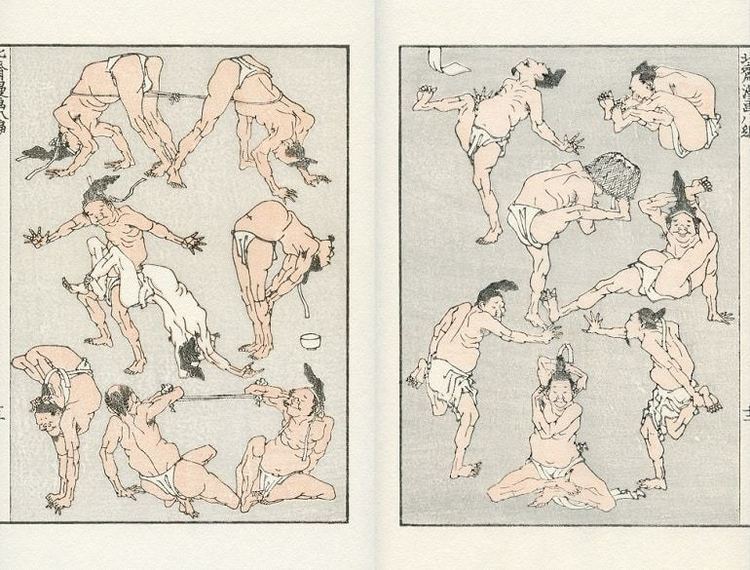
Publication history
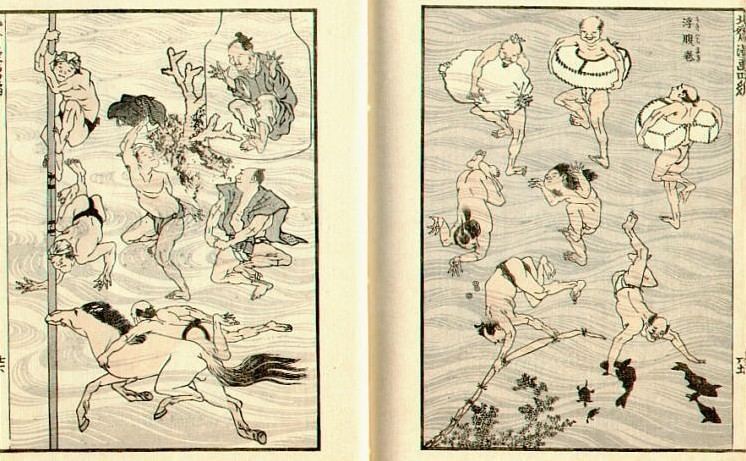
The preface to the first volume of the work, written by Hanshū Sanjin (半洲散人), a minor artist of Nagoya, suggests that the publication of the work may be aided by Hokusai's pupils. Part of the preface reads:
The final volume is considered spurious by some art historians.
Legacy
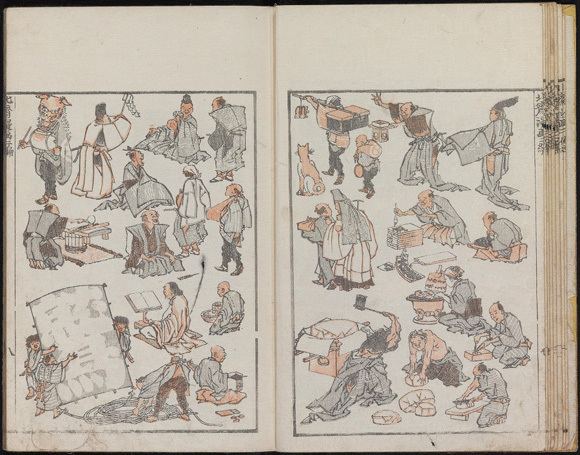
The first volume of 'Manga' (Defined by Hokusai as 'Brush gone wild'), was an art instruction book published to aid his troubled finances. Shortly after he removed the text and republished it. The Manga evidence a dedication to artistic realism in portrayal of people and the natural world. The work was an immediate success, and the subsequent volumes soon followed. The work became known to the West since Philipp Franz van Siebold's lithographed paraphrases of some of the sketches appeared in his Nippon: Archiv zur Beschreibung von Japon in 1831. The work began to circulate in the West soon after Matthew C. Perry's entry into Japan in 1854.
